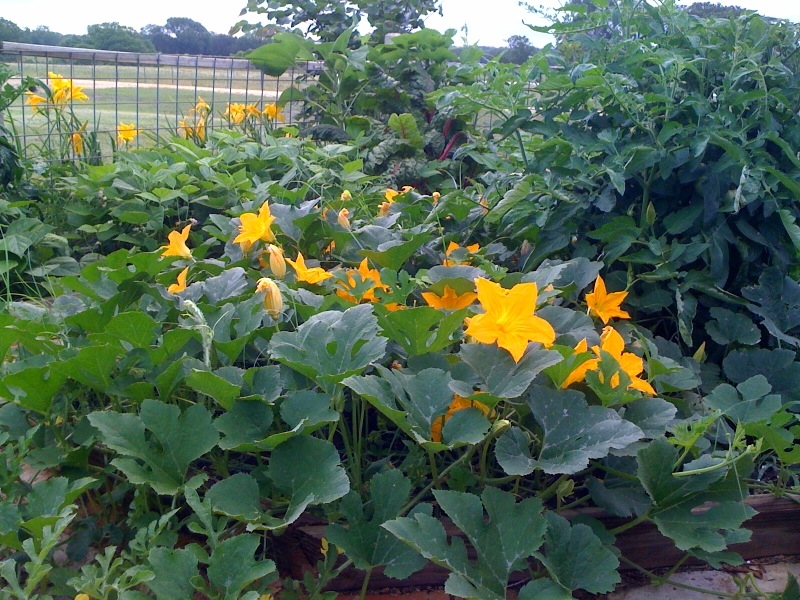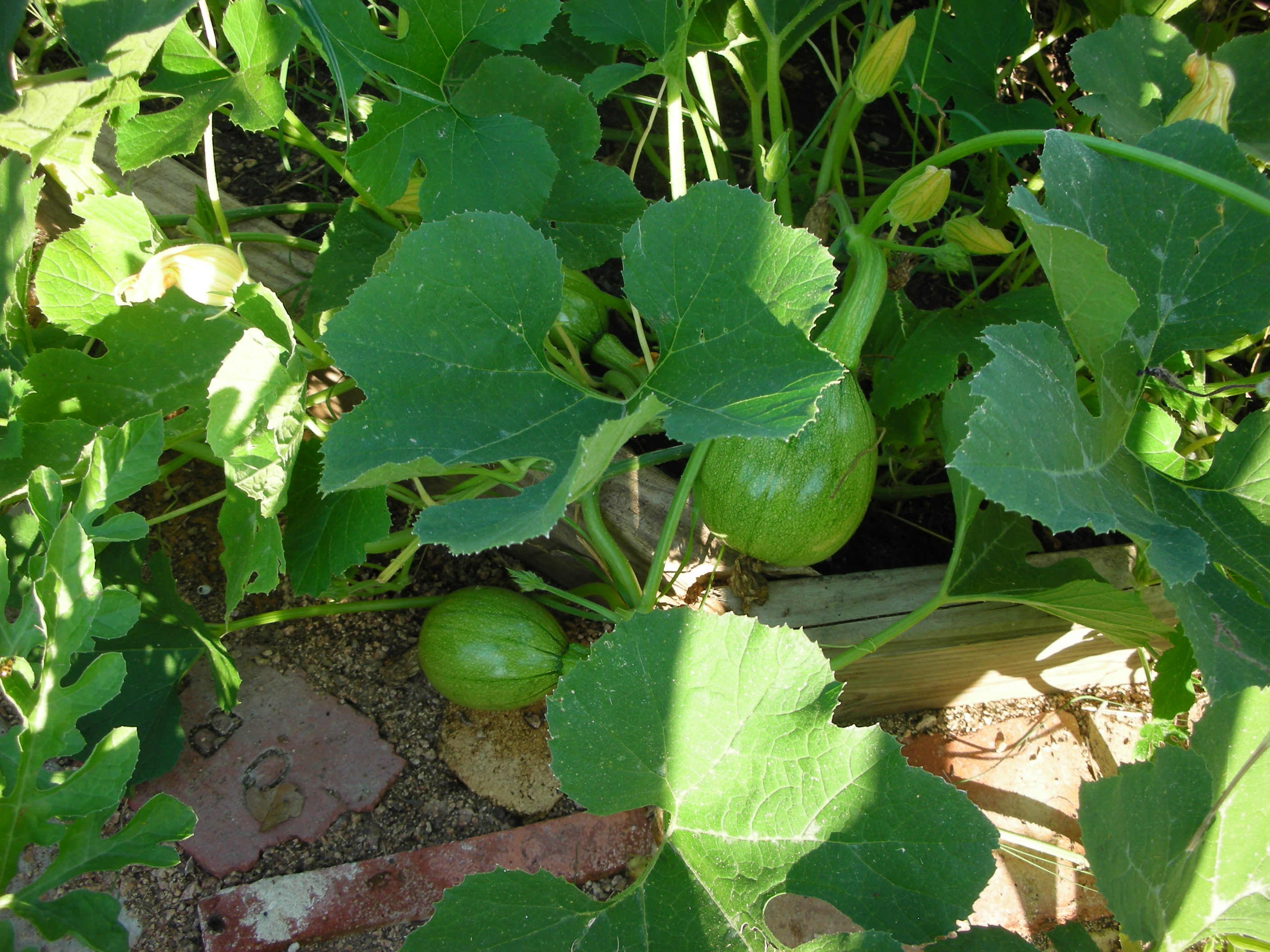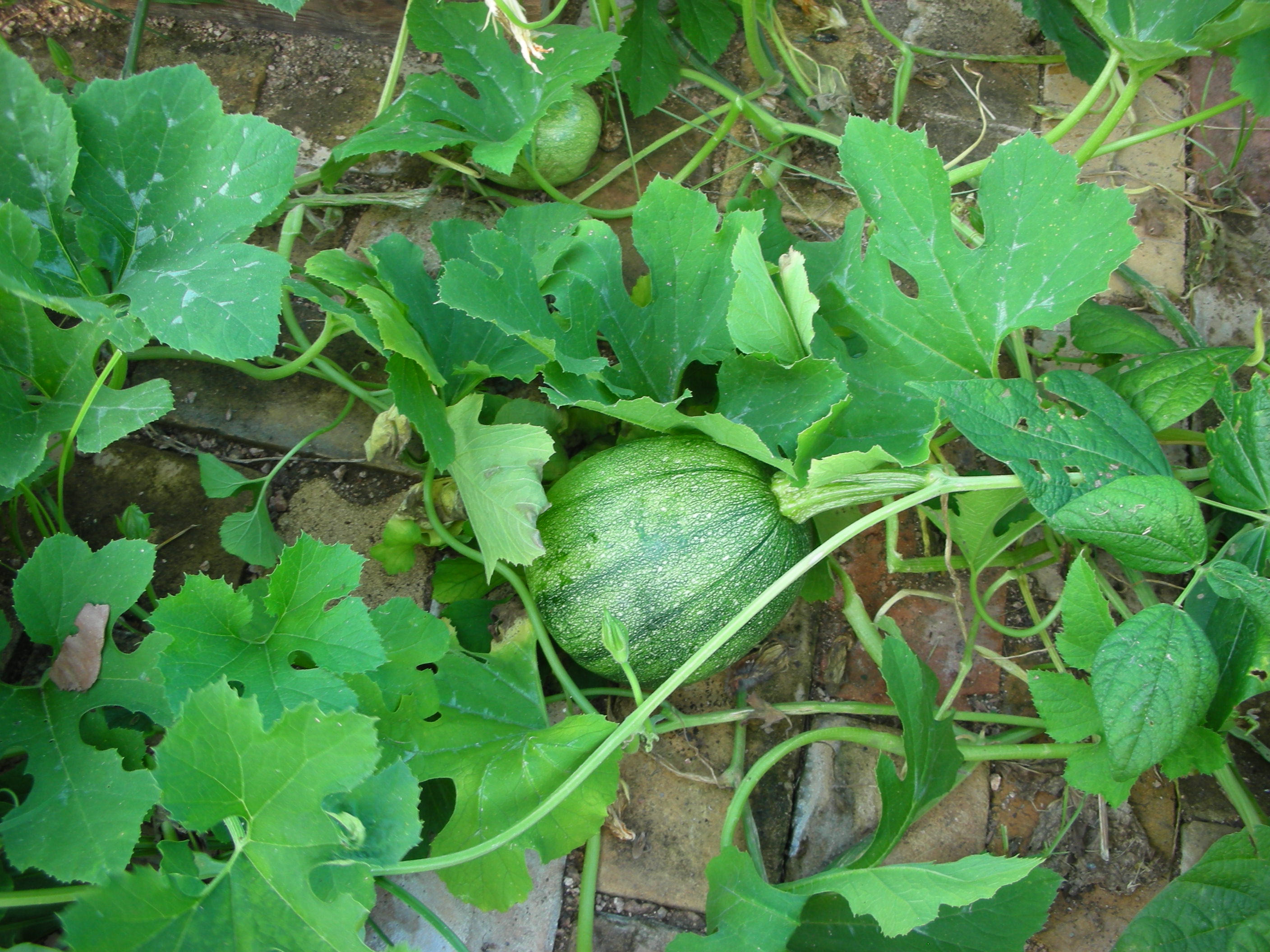Another front came through last night. Since this is the second significant front to come through in November I realize that the end of growing season is at hand for a lot of things in my garden. The last front actually brought a little freezing weather with it so I had to cover up the tomatoes. I also had a few winter squash that were not quite ready so I covered them too. I also harvested the winter squash that were ready.

The last of the winter squash. Top wrung – Red Warty Thing, Black Futsu and the unidentified squash. Second wrung – Turk’s Turban. Third wrung – another unidentifed squash. Photo by Chris Rue
I planted five varieties of winter squash back in August. I bought the seeds from Baker Creek Heirloom Seeds (rareseeds.com). Even though I planted five varieties of squash, I wound up only harvesting three of the varieties I ordered. This was due to a couple of strange things that I have never happened to me before.
The first were the cucumber beetles. OMG! They were terrible. In addition to being a general menace they completely destroyed all of the vines of the Lakota winter squash. I really wanted this variety so that was pretty disappointing. However, that is nature. Bugs happen. Since I have never had cucumber beetles before, and since they COMPLETELY ate all of the Lakota vines, I can only assume that the Lakota squash brought the bugs to me. I will never plant this variety again.

This image of Galeux d’ Eysines is from rareseeds.com. This what I wanted to grow. The green and orange squash in the first picture is what I got.
The next thing that happened was truly strange. I am convinced that Baker Creek somehow messed up their packaging. I ordered a variety called Galeux d’ Eysines. As the season progressed it became clear that I had none of this variety growing in my squash patch. Instead, I had a large, oblong squash that was mostly green but stripped with a little orange. To this day I have no idea what variety this squash is. I have gone through all of the pictures on their website and I can find nothing that resembles the squash I grew. Very strange. I know accidents happen but I have never bought a package of seeds and then had them turn out to be something other than what was advertised.
On another note, I recently got an e-mail and pictures from Sherry Westphal of Michigan. She grew Tatume’ on a trellis in her garden. Tatume’ is my favorite squash of all time. Tatume’ is the rare squash that can be grown as either a summer or winter squash. I grow it in the spring and eat it when it is young. However, if you leave it on the vine it will turn into a mild winter squash. So glad Sherry enjoyed her Tatume’ and took the time to send pictures and tell me about it.
All of this cold means the end of what I consider prime gardening time. The tomatoes are done and the last of my winter squash will soon be on the porch. However, thanks to my mild climate, I have enough greens and brassicas growing in the garden to keep my hands dirty until February.


















